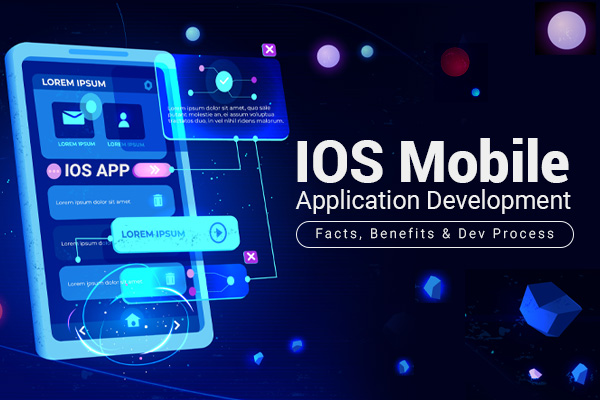The mobile app market continues to grow at an unprecedented pace, and for businesses, monetizing their apps effectively is the key to long-term sustainability. For an iOS app development company, helping clients choose the right monetization strategy is just as important as designing and building the app itself.
In 2025, iOS monetization is influenced by changing user behaviors, evolving technologies, and new regulations, especially in markets like the EU. From in-app purchases to subscription models and hybrid strategies, the winning formula blends user experience with revenue optimization.
1. In-App Purchases and the Freemium Model
In-app purchases (IAPs) remain the single largest revenue driver for iOS applications. They allow users to download an app for free but purchase additional content, features, or digital goods inside the app.
The freemium model complements IAP perfectly—offering enough value in the free version to attract a large user base, while reserving premium features for paying customers. In 2025, personalization plays a big role here. Apps that offer tailored bundles, dynamic pricing, and limited-time offers see significantly higher conversion rates.
For companies offering iOS app development services, it’s important to design the app architecture to support multiple types of purchases—consumable, non-consumable, and subscription-based—to keep revenue streams flexible.
2. Hybrid Monetization Strategies
Depending on one single revenue stream can make an app vulnerable to market changes. Hybrid monetization combines multiple methods—such as IAPs, subscriptions, and ads—to create a balanced and sustainable income flow.
For example, a learning app might offer free basic courses, premium subscriptions for advanced modules, and in-app purchases for individual lessons or certificates. This diversification helps stabilize revenue while maintaining a strong user experience.
3. Subscription Models
The subscription model has become a cornerstone of monetization in the App Store. Offering monthly, quarterly, or yearly subscription tiers creates predictable recurring revenue and strengthens customer loyalty.
In 2025, the most successful subscription apps focus on continuous value delivery. This means regular updates, fresh content, and premium features that keep users engaged over time. Family and enterprise subscription plans are also gaining traction, as they allow multiple users under one account.
For an iOS app development company, ensuring a frictionless subscription onboarding process and transparent cancellation policies is key to reducing churn.
4. Gamification as a Revenue Multiplier
Gamification is no longer just for gaming apps—it’s a proven engagement booster for almost every industry. By incorporating elements like points, levels, achievements, and leaderboards, apps can encourage repeat usage and guide users toward monetized features.
Fitness apps use challenges to encourage premium plan upgrades, language learning apps reward daily streaks with bonus content, and finance apps use milestone badges to promote advanced analytics tools.
When gamification is tied to rewards that have real perceived value, users are far more likely to make in-app purchases or renew subscriptions.
5. Smarter In-App Advertising
Advertising is still a viable monetization route, but in 2025, it’s all about smart placement and personalization. Intrusive ads frustrate users and can lead to churn, but well-timed, contextually relevant ads can be effective without harming the user experience.
Rewarded video ads—where users voluntarily watch a short ad in exchange for in-app currency or premium content—are particularly effective. Native ads that blend into the app’s design are also growing in popularity.
For iOS app development services, building the infrastructure for targeted and relevant ads ensures both revenue and user satisfaction.
6. Alternative Payments and Storefronts
Regulatory changes are reshaping how apps handle payments, particularly in Europe. Developers now have more flexibility to use alternative payment gateways outside Apple’s in-app purchase system, potentially reducing fees and increasing margins.
Some companies are experimenting with offering lower prices through web-based payment links or third-party app stores. While this approach can lead to savings, it also requires careful compliance and technical integration.
7. Data-Driven Revenue Optimization
No monetization strategy should remain static. Using analytics to track user behavior, churn points, and purchase funnels allows continuous refinement.
Apps can A/B test pricing models, adjust feature access, and experiment with promotional campaigns based on live data. A data-driven approach ensures that monetization evolves with user preferences and market conditions.
8. No-Code and Low-Code: When to Use Them, When to Walk Away
No-code and low-code tools have made it easier than ever to create apps quickly and with lower costs. These platforms can be a great option for MVPs, internal tools, or apps with simple monetization requirements.
However, when your goal is to build a highly scalable, performance-intensive app with complex monetization flows such as tiered subscriptions, dynamic pricing, or multi-currency support it’s better to invest in full custom development from an iOS app development company.
The choice comes down to long-term scalability versus short-term speed.
9. Social Commerce and Community Features
In 2025, many apps are integrating social commerce—letting users buy products directly through the app’s social feeds or community pages. Community-driven features such as chat rooms, groups, or live events also create opportunities for monetization through premium memberships or exclusive access passes.
By combining social interaction with transactions, apps can drive both engagement and sales.
10. Emerging Tech-Driven Monetization
New Apple technologies like Vision Pro and improvements in ARKit are opening up opportunities for immersive monetization models. AR experiences can be sold as premium add-ons, while AI-powered personalization can optimize purchase recommendations.
Forward-thinking developers who integrate these capabilities early can command premium pricing and stand out in competitive markets.
Monetization Strategy Matrix
| Strategy | Benefits | Challenges |
|---|---|---|
| In-App Purchases / Freemium | High revenue potential, scalable | Requires strong user engagement |
| Hybrid Model | Balanced revenue streams | Needs careful UX design |
| Subscriptions | Predictable recurring revenue | Churn management is critical |
| Gamification | Increases engagement and conversions | Must align with app purpose |
| Smart Ads | Additional revenue without hurting UX | Poor placement can cause churn |
| Alternative Payments | Higher margins, more control | Requires compliance and integration |
| No-/Low-Code Platforms | Fast to market, low cost | Limited customization and scalability |
| Social Commerce | Monetizes engagement directly | Requires active community management |
| Emerging Tech Monetization | High novelty and premium pricing potential | Higher development complexity |
Final Thoughts
In 2025, the most effective iOS app monetization strategies are those that put the user experience first while leveraging multiple revenue channels. Whether it’s through in-app purchases, subscriptions, gamification, or smart advertising, the key is to create consistent value for users.
For an iOS app development company, staying ahead means not just building apps, but building monetization into the DNA of the product from day one. With a mix of creativity, technology, and data-driven refinement, any iOS app can turn into a sustainable revenue-generating asset.



